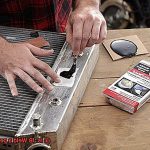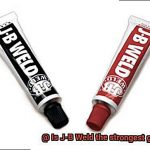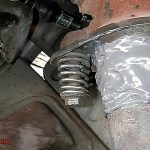Ever wondered if horse glue is still kickin’ in today’s world? You’re not alone, my friend. It’s time to peel back the layers and uncover the wild history and current relevance of this ancient adhesive. Horse glue, also known as animal glue, has been holding things together since forever. Even with all the fancy modern glues out there, horse glue still has its place in the world, catering to some niche markets. So saddle up and join me on this adventure as we dig deep into the past and unravel the surprising ways horse glue is used today.
History of Horse Glue
Contents
- 1 History of Horse Glue
- 2 Decline in Use of Horse Glue
- 3 Manufacturers of Horse Glue
- 4 Benefits of Using Horse Glue
- 5 Restoration Work and Horse Glue
- 6 Craftsmen and Artists Who Prefer Horse Glue
- 7 Regulations Regarding Animal Welfare and Ethical Sourcing for Horse Glue
- 8 Advantages of Synthetic Alternatives to Horse Glue
- 9 Conclusion
In the vast world of adhesives, horse glue stands out as a truly remarkable substance. Spanning centuries, its history weaves a captivating tale of ancient civilizations, versatile applications, industrial decline, and a modern resurgence. Join us on this fascinating journey through time as we explore the rich and diverse story of horse glue.
Ancient Origins:
The origins of horse glue can be traced back to the ancient Greeks and Romans who recognized its extraordinary bonding properties. Craftsmen would embark on a meticulous process, boiling horse bones, tendons, and cartilage to extract the collagen protein that formed the basis of this remarkable adhesive. From this humble beginning, horse glue became an invaluable asset in various industries.
Versatile Applications:
The versatility of horse glue knows no bounds. Woodworkers relied on its strength to create sturdy joints and durable structures. Bookbinders turned to it to preserve knowledge for generations. Even the delicate art of crafting musical instruments like violins benefited from its superior bonding properties, enhancing their sound quality with each note played.
Industrial Revolution and Decline:
As the world entered the era of industrialization, new adhesive alternatives emerged, causing a decline in horse glue usage. Synthetic glues and animal byproducts like bone glue offered convenience and cost-effectiveness previously unseen. Yet, despite this decline, horse glue persisted in specialized industries that demanded its unique properties for restoration or preservation purposes.
Resurgence in the Modern Era:
Today, there is a rekindled interest in sustainability and traditional craftsmanship, leading to a revival in the use of horse glue. Artisanal craftsmen and restorers have rediscovered the allure of natural ingredients and time-honored techniques that make horse glue so appealing.
Its compatibility with historical materials makes it invaluable for restoring antiques or replicating traditional art forms, reigniting its status as an admired adhesive of choice in niche markets.
Decline in Use of Horse Glue
Today, we unravel the tale of the decline in the use of horse glue. Once a stalwart in numerous industries, this extraordinary adhesive has witnessed a steady descent in popularity over time. But what factors have contributed to its downfall? Let’s explore the reasons behind this intriguing shift.
The Rise of Synthetic Glues:
Enter the superheroes of modern adhesives – synthetic glues. With their rapid drying time, enhanced strength, and superior resistance to moisture and heat, these innovative alternatives have taken center stage. In comparison, horse glue couldn’t keep pace with these technological advancements, leading to its decline.
Availability and Cost:
Obtaining horse glue is no mean feat. The collection and processing of animal by-products are both time-consuming and expensive endeavors. In contrast, synthetic glues can be produced on a large scale at a lower cost, making them economically viable for industrial applications.
Ethical Concerns:
In our ever-evolving society, animal welfare has become a pressing concern. Activists argue that using horses for glue production is exploitative and unnecessary. As a result, consumers are becoming increasingly mindful of the products they purchase, leading to a decline in demand for horse glue.
Environmental Impact:
The production of horse glue leaves an undesirable environmental footprint. The process involves boiling and rendering animal parts, which can release pollutants into the environment. Additionally, waste disposal poses environmental challenges. As sustainability takes center stage, alternatives that are more eco-friendly are gaining traction.
The Rise of Alternative Adhesives:
In response to the decline in horse glue usage, worthy contenders have emerged in the adhesive arena. Synthetic glues, epoxy resins, and polyurethane adhesives offer versatility and performance that rival their equine counterpart. These alternatives have become popular due to their wide range of bonding capabilities, making them suitable for various applications.
Manufacturers of Horse Glue
In a world dominated by synthetic adhesives, there are still a few manufacturers who refuse to let the tradition of horse glue fade away. Once revered as the ultimate adhesive for bookbinders, woodworkers, and even musical instrument makers, horse glue has faced a decline in popularity due to the demand for faster and more sustainable alternatives.
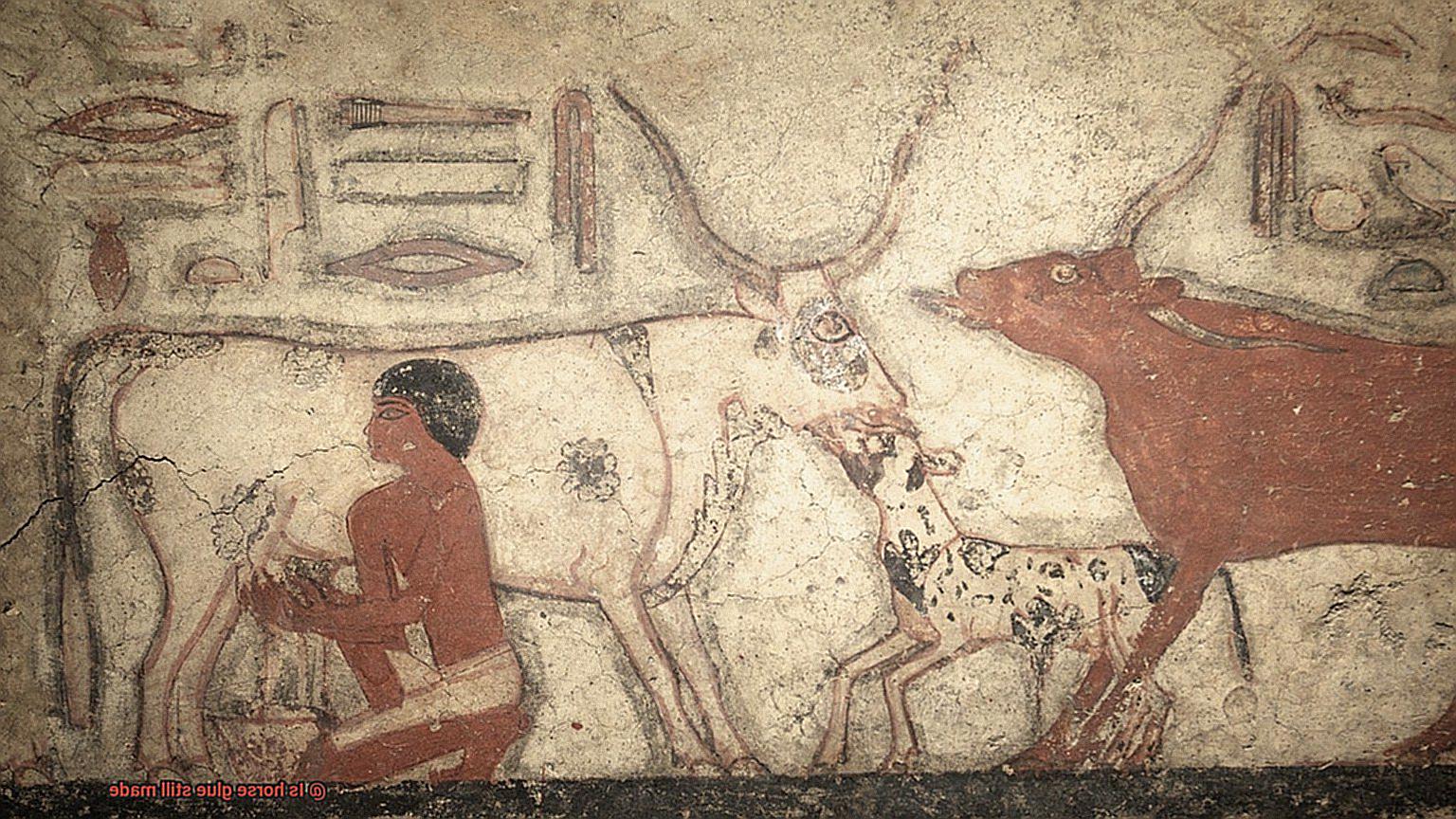
However, amidst this changing landscape, dedicated manufacturers continue to uphold the craft and unique properties of horse glue.
One such manufacturer can be found in France, where age-old techniques are employed to create exquisite horse glue. They meticulously source horse hides and follow traditional methods to ensure the glue retains its natural strength and durability.
This commitment to craftsmanship sets them apart from the mass-produced synthetic alternatives.
Across the Atlantic, another manufacturer in the United States specializes in producing horse glue for restoration and conservation purposes. They understand that when it comes to preserving historical artifacts or performing delicate repairs, authenticity is paramount. The use of authentic materials ensures a seamless bond that stands the test of time.
These manufacturers cater to niche markets and industries that require specific adhesive properties. Horse glue’s ability to withstand moisture, heat, and aging makes it invaluable in applications where synthetic alternatives fall short. Its unique qualities have made it a staple in fields such as antique restoration, violin making, and historical artifact preservation.
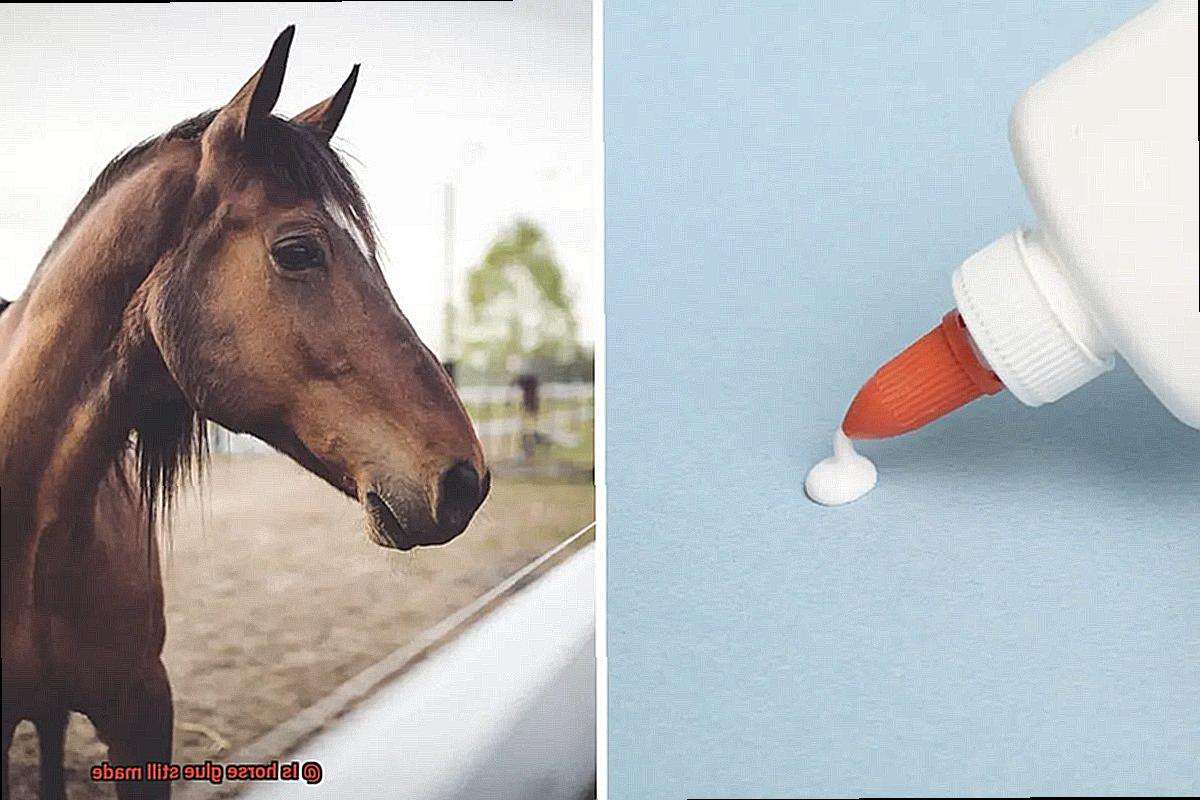
However, the future of horse glue production remains uncertain. Stricter regulations surrounding animal welfare and environmental sustainability have posed challenges for manufacturers. The laborious process of collecting and processing animal by-products is both time-consuming and costly. Addressing these concerns while preserving tradition is an ongoing battle for these determined manufacturers.
Benefits of Using Horse Glue
Horse glue, a time-honored adhesive used for centuries, offers a plethora of benefits that make it a top choice in various industries. Its exceptional bonding properties, versatility, resistance to heat and moisture, eco-friendly nature, reversibility, aesthetic appeal, and long shelf life all contribute to its desirability. Let’s explore these advantages in more detail.
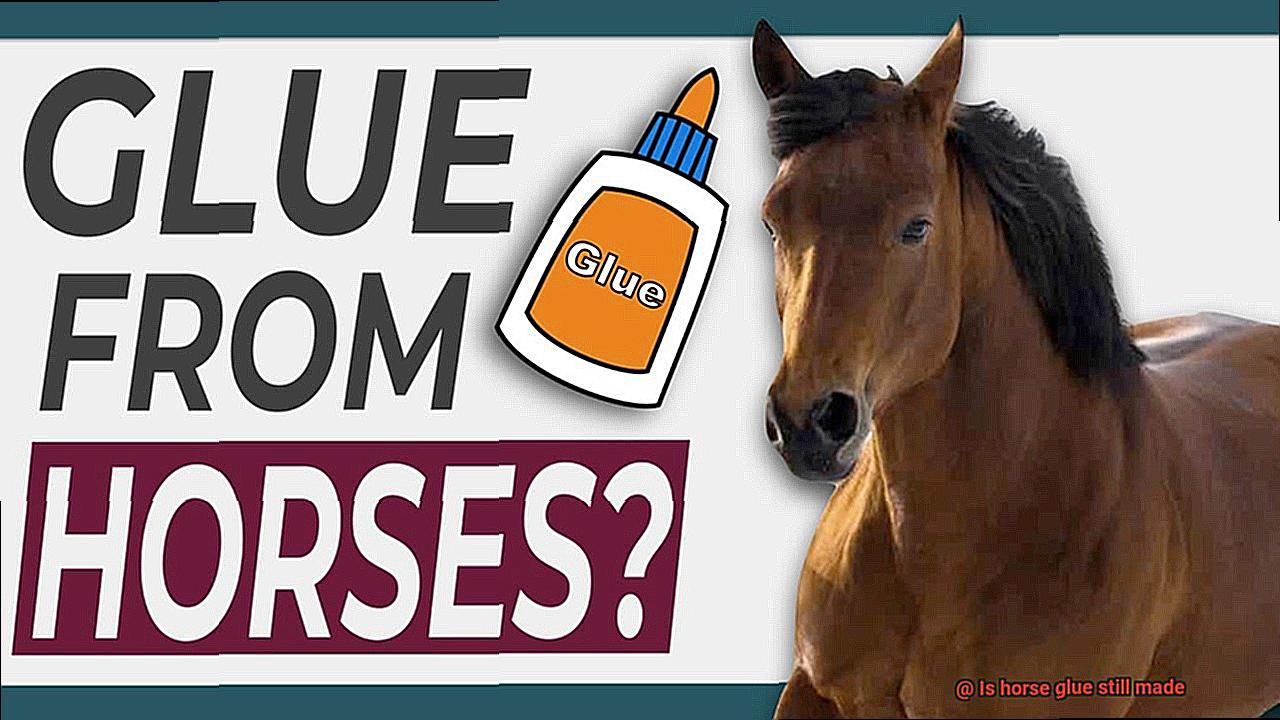
First and foremost, horse glue reigns supreme when it comes to bonding. With its unparalleled adhesive strength, it creates secure and long-lasting bonds on a wide range of materials. Whether you’re working with wood, leather, paper, or fabric, horse glue tackles them all with ease.
But horse glue doesn’t stop there. It also possesses an impressive resistance to heat and moisture. Unlike other adhesives that may falter under challenging conditions, horse glue remains steadfast. It can endure extreme temperatures and humid environments without compromising its adhesive properties. So whether you’re undertaking an outdoor project or working in a high-moisture environment, horse glue has got your back.
One of the standout features of horse glue is its eco-friendly composition. Derived from natural ingredients sourced from animal by-products, this adhesive is non-toxic and safe for both users and the environment. Say farewell to chemical-based adhesives that harm the planet and embrace a greener alternative.
But what truly sets horse glue apart is its reversibility. Unlike many modern adhesives that create permanent bonds, horse glue can be dissolved with heat or water. This flexibility allows for repairs or disassembly if needed, making it an excellent choice for projects that require adjustments down the line.
And let’s not forget about aesthetics. Horse glue dries clear and leaves no visible marks or residue on surfaces. So if appearance is paramount to your project, rest assured that horse glue won’t let you down.
Lastly, horse glue has stood the test of time. Craftsmen and artisans have trusted this adhesive for centuries, and its proven track record speaks volumes about its quality and reliability.
Restoration Work and Horse Glue
In the world of restoration work, where ancient artifacts and valuable antiques are brought back to their former glory, the choice of adhesive is of utmost importance. For centuries, horse glue reigned supreme in this realm, with its exceptional properties making it the go-to adhesive for skilled craftsmen. However, in recent years, its popularity has waned, giving way to modern synthetic adhesives.
So, what led to the decline of this esteemed adhesive?
Horse glue offers several advantages that made it the preferred choice for restoration work:
- Unmatched Bonding Strength: With its unparalleled bonding strength, horse glue is ideal for delicate restoration work. It ensures that repaired pieces will withstand the test of time, preserving these treasures for generations to come.
- Transparency and Flexibility: One of horse glue’s remarkable qualities is its ability to dry clear and remain flexible once set. This makes it possible for restorers to seamlessly repair and conceal damages without leaving any visible traces behind.
- Reversibility: Unlike many modern adhesives that create permanent bonds, horse glue offers the unique advantage of reversibility. If a restoration needs to be undone or modified in the future, the adhesive can be easily removed without causing any damage to the artifact.
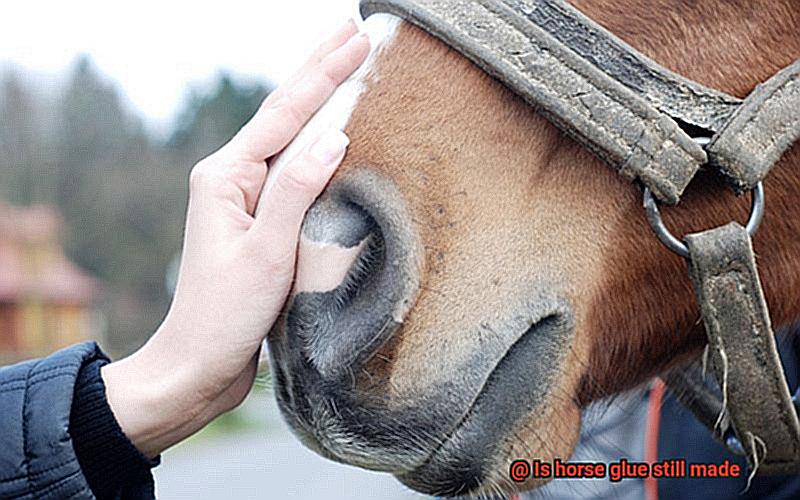
However, horse glue has faced challenges that led to its decline:
- Competition from Synthetic Adhesives: The rise of synthetic adhesives, such as epoxy resins and polyvinyl acetate (PVA), has provided restorers with alternative options that offer enhanced durability and ease of use. These synthetic adhesives provide similar properties to horse glue but with improved performance.
- Ethical Concerns: In recent years, there has been a growing awareness and concern for animal welfare. Horse glue is derived from animal by-products, specifically the hides and bones of horses. As a result, some restorers may choose to avoid using horse glue due to ethical reasons.
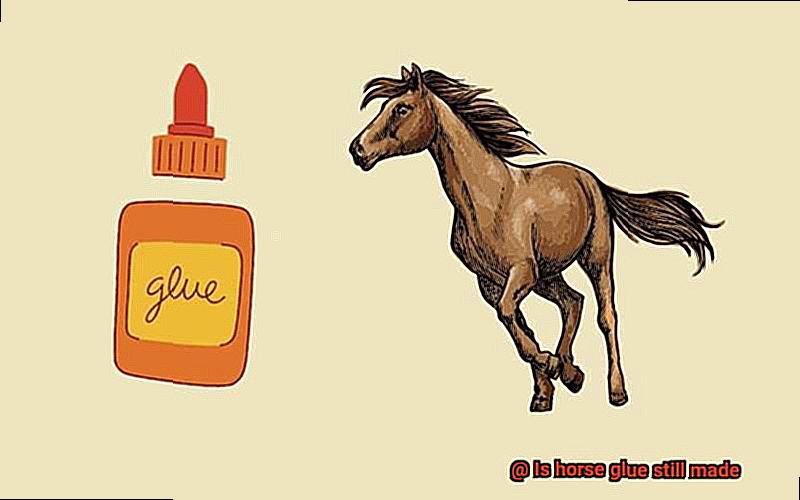
Despite these challenges, horse glue still has its loyal proponents who appreciate its traditional nature and the authenticity it brings to restoration work. For these craftsmen, the legacy and timeless appeal of horse glue hold great value.
Craftsmen and Artists Who Prefer Horse Glue
Although its popularity has waned in recent times, there are still those who appreciate its unique qualities and historical significance. Join us as we delve into why some craftsmen and artists continue to choose horse glue over modern alternatives.
Exceptional Strength and Durability:
Craftsmen and artists prefer horse glue for its exceptional bonding strength and durability. Whether it’s woodworking, bookbinding, or delicate crafts, horse glue offers a strong bond that can withstand heavy loads and extreme conditions. Its ability to bond porous materials like wood, paper, leather, and fabric makes it a reliable choice for long-lasting adhesion.
Reversibility: A Restorer’s Dream:
Restoration specialists cherish horse glue for its reversibility. Unlike synthetic glues that form irreversible bonds, horse glue can be easily dissolved and repaired if necessary. This allows restorers to disassemble items without causing damage to the original materials, ensuring meticulous and authentic restoration.
Natural Composition: An Eco-Friendly Alternative:
In an era where sustainability is paramount, horse glue provides an eco-friendly alternative to synthetic adhesives. Derived from organic materials found in horses’ hides, bones, and hooves, it contains no harmful chemicals. The natural composition of horse glue appeals to artisans who prioritize minimizing their environmental impact while creating beautiful works of art.
Aging Gracefully: Adding Authenticity to Crafts:
One unique quality of horse glue is its ability to age gracefully. As time passes, horse glue develops a beautiful patina that adds charm and authenticity to crafts such as antique furniture restorations or historical replicas. Artisans specializing in traditional or vintage pieces seek this feature as it enhances the overall aesthetic appeal of their creations.
Regulations Regarding Animal Welfare and Ethical Sourcing for Horse Glue
Horse glue production has raised concerns regarding animal welfare and ethical sourcing. Fortunately, stringent regulations and standards are in place to ensure that the production of horse glue is conducted in a humane and ethical manner. Let’s delve into these regulations to understand what they mean for consumers seeking ethical choices when purchasing glue.
European Union (EU) Regulation No. 1069/2009:
- This regulation sets out rules for the disposal and processing of animal by-products, including horses used for glue production.
- Horses must originate from approved slaughterhouses and adhere to strict animal welfare standards.
- The use of horses treated with medications or substances harmful to human health is strictly prohibited.
Country-Specific Guidelines:
- Individual countries may have their own specific guidelines regarding horse sourcing for glue production.
- In the United States, the Animal Welfare Act establishes minimum standards of care for animals across various industries, indirectly impacting horse glue production.
Voluntary Certifications and Standards:
- Many glue manufacturers voluntarily adhere to certifications or standards that surpass legal requirements.
- Some companies choose to source horses from suppliers who meet specific animal welfare criteria, such as those outlined by the World Animal Protection organization.
- Criteria may include requirements for adequate housing, access to food and water, and provision of proper veterinary care.
Transportation and Slaughterhouse Practices:
- Ethical sourcing extends to transportation and slaughterhouse practices.
- Transport conditions should minimize stress and discomfort for horses, complying with relevant regulations.
- Slaughterhouses should handle horses humanely, employing practices that minimize pain and distress during the process.
Advantages of Synthetic Alternatives to Horse Glue
Glue may seem like a mundane product, but there is more to it than meets the eye. With the emergence of synthetic alternatives to traditional horse glue, we now have a conscious choice that offers numerous advantages. In this article, we will delve into the benefits of using synthetic alternatives, including ethical considerations, consistent quality, superior performance, versatility, extended shelf life, allergen-free properties, and reduced environmental impact.
Ethical Concerns:
Say goodbye to animal cruelty. Traditional horse glue is derived from horses’ connective tissues and bones, raising ethical questions about their treatment and slaughter. Synthetic alternatives provide a guilt-free option, ensuring no harm comes to animals.
Consistency and Quality:
Leave behind the unpredictability of horse glue. Synthetic alternatives offer a higher level of consistency and quality. Traditional glue can vary in adhesive properties due to factors like age, breed, and health of the horses used. Synthetic alternatives provide greater control over formulation, resulting in a reliable product that consistently adheres.
Performance:
It’s time for superior strength and durability. Advanced technologies have led to synthetic glues that outperform horse glue in terms of strength, durability, and flexibility. These high-performance adhesives can withstand extreme temperatures, resist moisture, and adhere excellently to various surfaces.
Versatility:
Embrace limitless possibilities. Synthetic alternatives offer a broader range of adhesive properties. Manufacturers can tailor the formulation to suit specific applications, ensuring optimal performance in woodworking, construction, crafting, and more. Whatever the task may be, there’s a synthetic alternative that meets its unique requirements.
Shelf Life:
Bid farewell to deterioration. Synthetic alternatives generally have a longer shelf life compared to horse glue. Traditional glue tends to degrade over time due to its organic nature, compromising its effectiveness. Synthetic glues remain stable and usable for extended periods without compromising their adhesive properties.
Allergen-Free:
Breathe easy with allergen-free options. Horse glue contains proteins that may trigger allergic reactions. Synthetic alternatives eliminate this concern as they are typically free from allergens. This makes them a safer choice for individuals with sensitivities or allergies, fostering a healthier and more inclusive working environment.
Environmental Impact:
Embrace eco-friendly alternatives. Synthetic glues can be formulated to be more environmentally friendly than horse glue. Traditional production involves significant energy, water, and chemical usage. By opting for synthetic alternatives, manufacturers can reduce their environmental footprint through water-based, non-toxic formulations with fewer volatile organic compounds (VOCs).
1a0EL1gibdU” >
Conclusion
In conclusion, horse glue, or animal glue, boasts a remarkable legacy that spans centuries. It has been cherished by ancient civilizations and played an indispensable role in industries like woodworking, bookbinding, and musical instrument making. However, with the emergence of synthetic glues and mounting concerns about animal welfare and environmental impact, the demand for horse glue has waned.
Nevertheless, there are still steadfast manufacturers who persist in crafting horse glue for niche markets. These manufacturers honor the tradition and distinct properties of horse glue, catering to industries that require its specific adhesive qualities for restoration or preservation purposes. Horse glue offers unparalleled bonding strength, resilience against heat and moisture, reversibility, eco-friendly composition, aesthetic allure, and an extended shelf life.
Yet synthetic alternatives have gained traction owing to their superior performance, consistent quality, versatility in applications, prolonged shelf life, allergen-free nature, and diminished environmental footprint. These alternatives provide a conscious choice for consumers who prioritize ethical considerations and seek adhesives with exceptional performance.
Ultimately, the decision between horse glue and synthetic alternatives hinges on personal preferences and specific application requirements. While horse glue carries historical significance and captivates those who cherish traditional craftsmanship, synthetic alternatives offer cutting-edge technologies and advantages tailored to modern needs.




